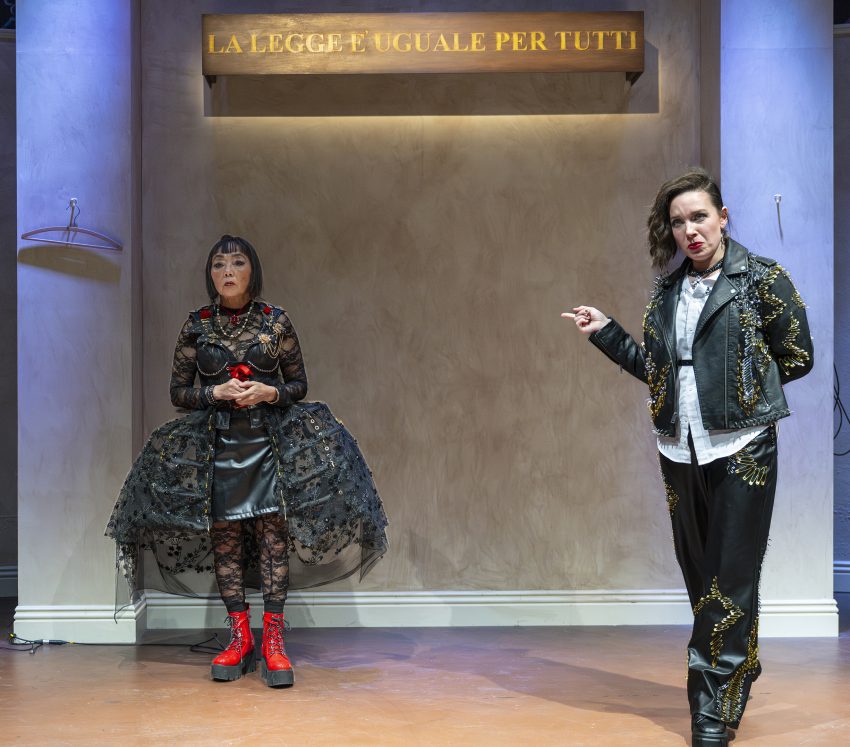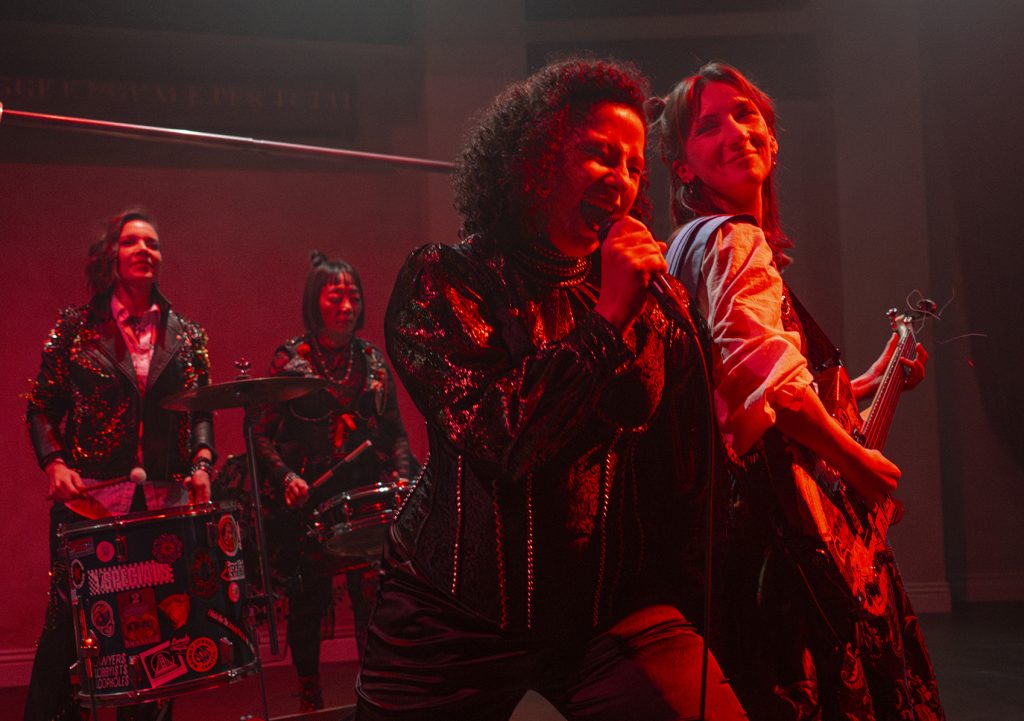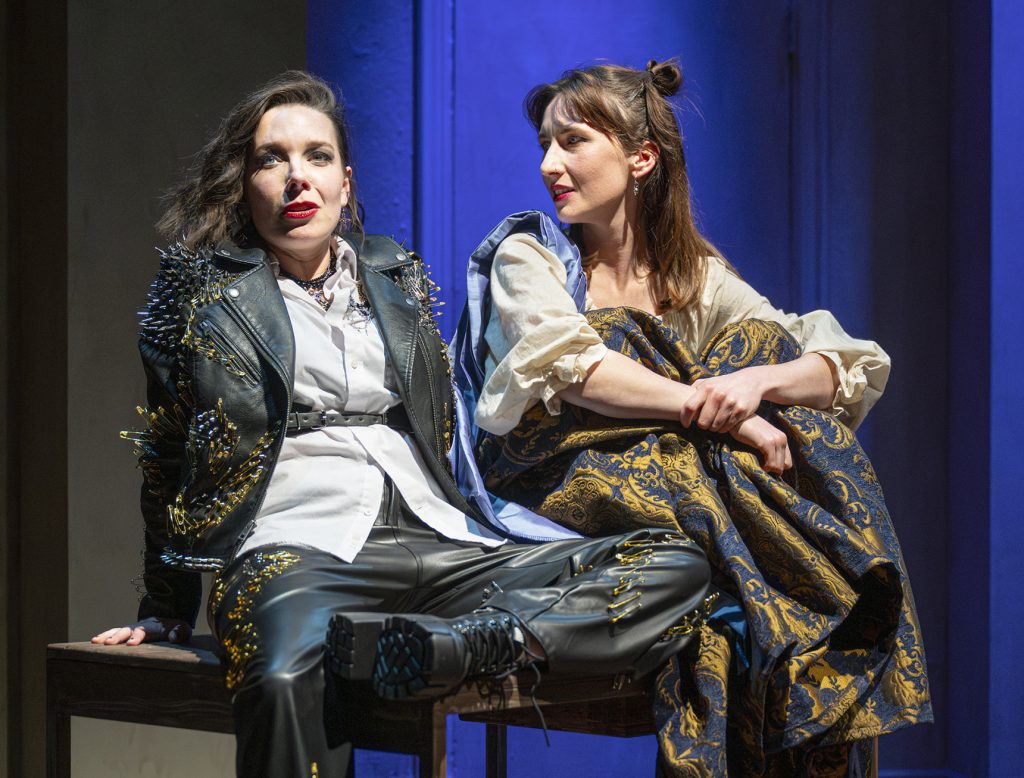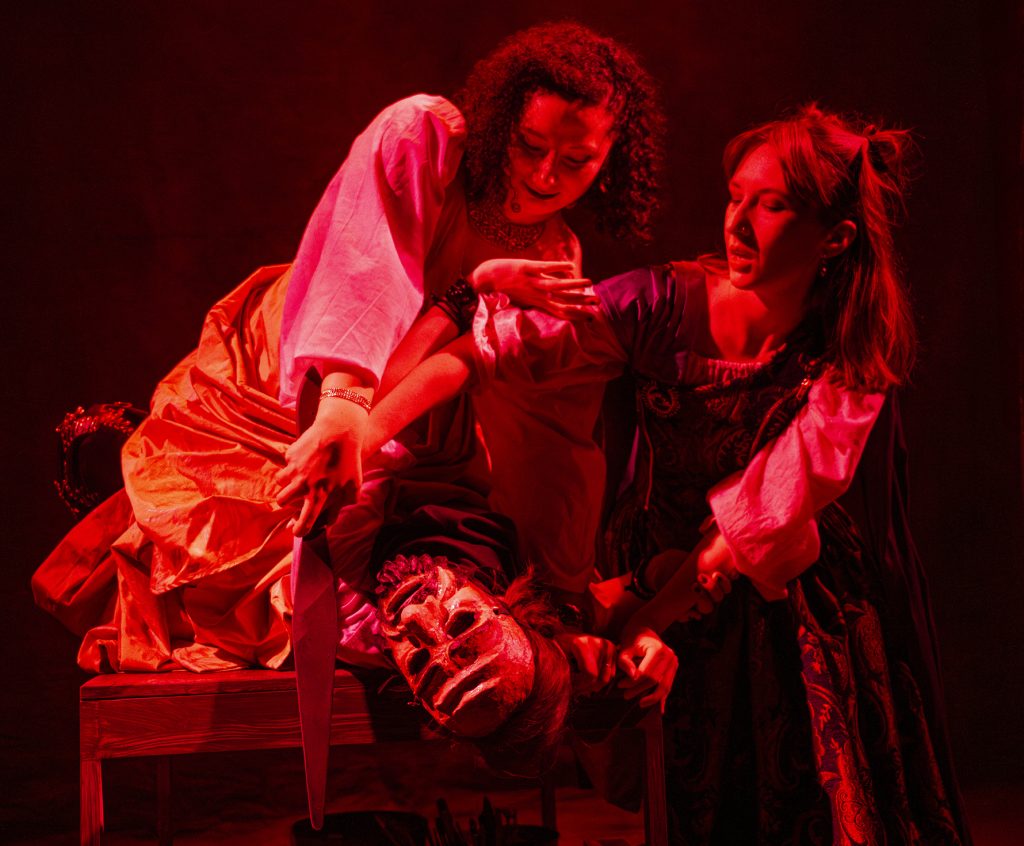
“It’s True, It’s True, It’s True”: An Acting Showpiece—at Marin
Barrett & Stevens Turn Renaissance Rome into Punk-Rock London
by Rachel Norby
Amazingly, “It’s True, It’s True, It’s True” takes its dialogue from a 1612 rape trial in Renaissance Rome. Apart from torture by thumbscrews, the young woman’s accusation that she has been raped could be a dramatization of a trial for rape in today’s U.S. courtrooms. The striking dialogue—brought to life by exceptionally talented actors—sounds like what happens in rape trials today—more than 400 years later. But the punk rock costuming and raucous music distract us from the woman’s moving speeches.
Any commentary made in the musical lyrics scattered through the play is lost in the noise of the instruments and volume of the speakers blasting the singers’ words.
The excellently executed flashbacks and vignettes give bold context to the original seven months long, scandalous trial. The actors effortlessly climb into many additional characters, removing any possibility of confusion about what’s going on.

Emily Anderson is phenomenal as the Artemisia Gentileschi, the baroque painter who is the focus of the play. She was 17 years old when she was raped by her painting tutor; and she exudes innocence and naïveté in the flashbacks that lead to the trial we are witnessing. At the trial itself, she is compelling and sympathetic. Her confusion, frustration, and panic are palpable as she faces injustice after injustice, eventually leading to her desperate utterance: “I am not the one on trial!”
As the Judge overseeing the trial, Alicia M. P. Nelson starts by channeling the solemn demeanor of a dignified, impartial jurist. The only clues to what the Judge is thinking are his questions and sly looks. Even those are delivered with such a commanding tone that were one not to listen to his actual words, his utterly absurd and prejudicial questions and directives might seem perfectly reasonable. It’s a shell game and the truth is constantly hidden.

Keiko Shimosato Carreiro shines as Tuzia, Artemisia’s fair-weather friend and caretaker. Unlike Nelson’s Judge, Carreiro’s Tuzia emotes with every word that flies out of her mouth. She’s up, she’s down, she’s happy, she’s sad, she’s accusatory, she’s unsure, she’s indignant, she’s humble. Carreiro’s emotional swings enhance the subtleties of her character’s testimony without overtaking them. Her evasiveness and hypocrisy are quickly evident.
Maggie Mason deftly portrays the despicable rapist Agostino. She perfectly embodies the duality of his character—laid-back and mocking one moment, flying into a furious rage the next. She radiates the self-assured confidence of a man who has no doubt he will conquer in the end. It is an all-too-believable and brilliant performance.

We soon learn that “All are NOT Equal Under the Law” from a scribbled sign that replaces the noble motto.
Artemesia wins finally—not in the court of law, but in the palace of art. Her two paintings of women getting revenge, still famous, depict the horrors of woman-hatred and a woman’s revenge. See this show for those startling tableaux of her paintings—they say it all.
“It’s True, It’s True, It’s True” by Billy Barrett and Ellice Stevens, directed by Rebecca Wear, at Marin Theatre, Mill Valley, California. Info: marintheatre.org – to May 4, 2025.
Cast: Emily Anderson, Maggie Mason, Keiko Shimosato Carreiro, and Alicia M.P. Nelson.
Banner photo: Tuzia (Keiko Shimosato Carreiro) listens as Agostino (Maggie Mason) argues. Photos: David Allen
The sign says: “The Law Is Equal for Everyone.”